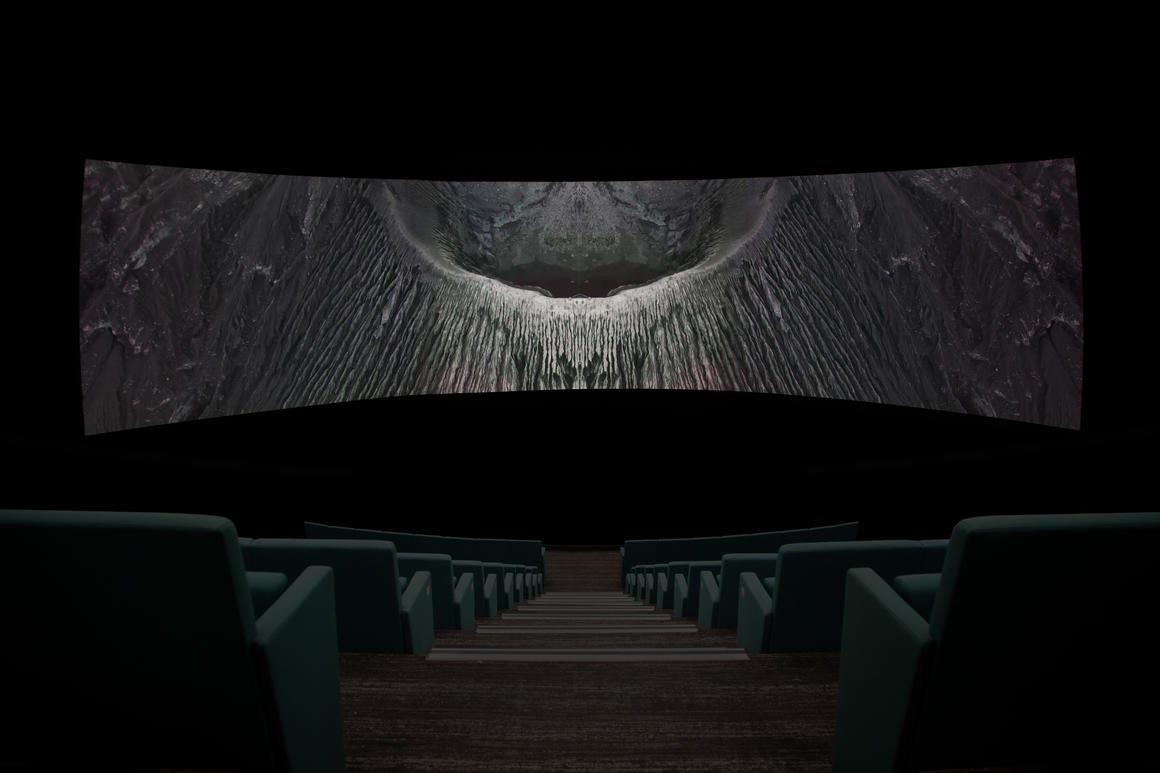
28.08.24 - Contemplating the cosmos: Charles Stankievech’s new book “The Desert Turned to Glass”
From Paleolithic caves to spiritual temples like the Panthenon, medieval cathedrals and mosques to modernist planetariums, domed architecture has served as a pivotal space for human reflection. In his new book, The Desert Turned to Glass, acclaimed artist and Associate Professor Charles Stankievech explores the evolution of the planetarium as it relates to the origins of life, consciousness and art.
The book reflects over a decade of Stankievech’s research, pairing visual documentation of his cinematic installations with newly commissioned essays by geologists, exobiologists, philosophers and archeologists. The book’s title is inspired by Stankievech’s time spent in the desert during an artist residency in Marfa, Texas, “where both meteorites and the first atomic explosion melted the desert sand into glass.”

The book opens with a newly translated 1923 Walter Benjamin text that discusses the inauguration of the first planetarium and humanity’s search for a cosmic connection during a period of technological progress and post-World War I reflection. This historical context frames the subsequent essays by editors Ala Roushan, Dehlia Hannah and Nadim Samman.
Originally commissioned for the 100th anniversary of the planetarium, a central part of the publication documents Stankievech’s exhibition The Desert Turned to Glass, first mounted at Calgary Contemporary. The cinematic installation Eye of Silence blends footage of atmospheric phenomena, volcanic landscapes and meteorite craters to depict the Earth’s evolution and provoke reflections on creation and transformation.
Additional essays by physicist Karen Barad and archaeologist David Lewis-Williams explore cosmological questions from a deep-time perspective. Further interviews with experts, including renowned architect Douglas Cardinal, who serves as Decanal Advisor on Indigenous Knowledge at the Daniels Faculty, offer insights into geoscience, meteorites, architecture, Zen Buddhism and Artificial Life.
The book also includes a final section on Stankievech’s methodology, featuring a discussion with primary collaborator Roushan.
“With this closing dialogue weaving together the book’s themes, I hope we have established a new realm of connections, resonances and relationships,” Stankievech writes.
The Desert Turned to Glass is available for checkout at the Eberhard Zeidler Library in the Daniels Building and for purchase online through Hatje Cantz. The related body of work will be exhibited at Oakville Galleries and internationally in Germany, Prague and Denmark this fall.
Banner image: The Eye of Silence, 2023. 6K video 30mins with 7.1 audio. Installation View at Contemporary Calgary Planetarium Dome.

